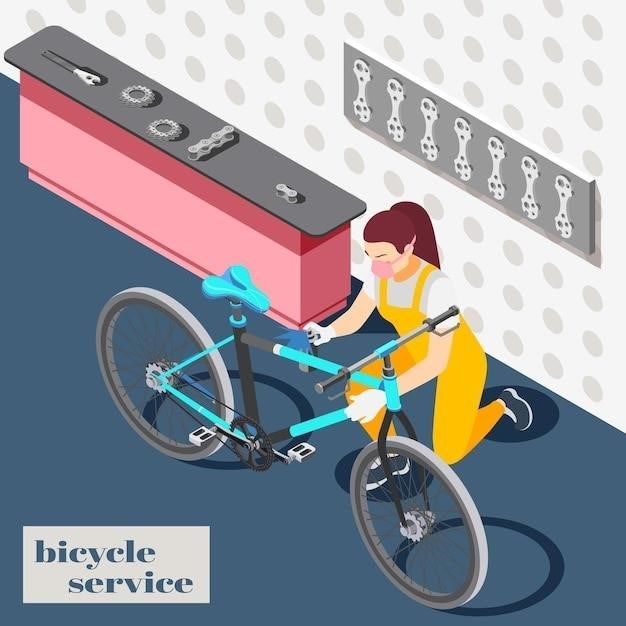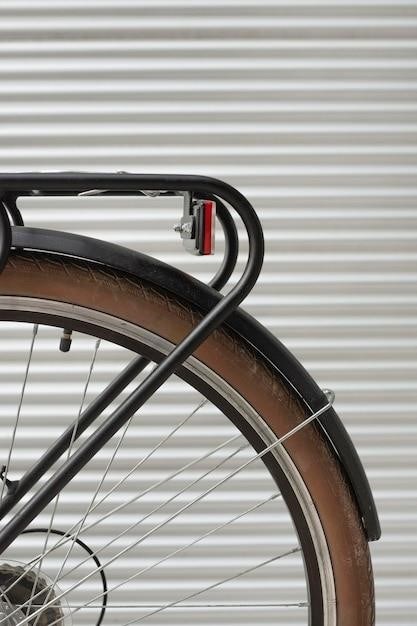Saris Bike Rack Instructions
This comprehensive guide provides step-by-step instructions for assembling, installing, and using your Saris bike rack. Whether you’re a seasoned cyclist or a first-time rack user, these instructions will ensure you have a safe and enjoyable experience transporting your bike.
Introduction
Saris bike racks are renowned for their quality, durability, and ease of use. These racks are designed to transport your bicycles safely and securely, allowing you to enjoy your cycling adventures without worry. Whether you’re planning a weekend getaway, a long-distance road trip, or simply need to transport your bike to the park, a Saris bike rack is a valuable investment. This guide will provide you with all the information you need to properly assemble, install, and utilize your Saris bike rack, ensuring a smooth and hassle-free experience.
Saris bike racks are known for their intuitive design, making them user-friendly for both seasoned cyclists and newcomers. They are built with high-quality materials and are backed by Saris’ commitment to excellence. By following the instructions provided in this guide, you can ensure that your bike rack is properly installed and ready to safely transport your precious bikes. So, let’s get started and explore the world of Saris bike racks together.
Types of Saris Bike Racks
Saris offers a wide range of bike racks to suit various needs and preferences. Their diverse selection ensures that you can find the perfect rack to fit your vehicle and your cycling style. The primary categories of Saris bike racks include hitch racks, trunk racks, and roof racks. Each type offers unique advantages and considerations.
Hitch racks are designed to be mounted onto the receiver hitch of your vehicle. They offer a robust and secure way to transport bikes, often accommodating multiple bicycles. Trunk racks, as the name suggests, attach to the trunk of your vehicle. They are a convenient option for those who need a more portable solution. Roof racks, on the other hand, are mounted to the roof of your vehicle, providing a high-profile option for transporting bikes. Each type of rack has its own set of pros and cons, and choosing the right type depends on your specific needs, vehicle, and cycling preferences.
Hitch Racks
Hitch racks are a popular choice among cyclists for their stability, security, and capacity. Saris offers a variety of hitch racks, each designed to cater to different needs and preferences. Their platform-style hitch racks provide a secure and stable base for your bikes, while their hanging-style hitch racks offer a more compact option. The platform-style racks are ideal for transporting heavier bikes, including electric bikes, and often feature additional features like integrated lights and a locking system. The hanging-style racks are a lighter-weight option and can be a good choice for those who need a rack that can be easily stored or transported.
When choosing a hitch rack, it’s important to consider the weight capacity of the rack, the number of bikes you need to transport, and the overall size and weight of your bikes. It’s also important to ensure that the rack is compatible with your vehicle’s hitch receiver. Saris provides detailed information about the compatibility of each hitch rack on their website, making it easy for you to find the right rack for your specific needs.
Trunk Racks
Trunk racks are a convenient and affordable option for transporting bikes, particularly for those who don’t want to invest in a more permanent hitch rack. They are designed to mount onto the rear hatch or trunk of your vehicle, utilizing straps or clamps to secure themselves. Saris offers a variety of trunk racks, ranging from simple two-bike models to more elaborate three-bike options with additional features. The trunk rack is typically a good choice for lighter bikes and is often a popular choice for occasional bike transport.
When choosing a trunk rack, it’s important to ensure that it is compatible with your vehicle. Not all trunk racks are compatible with every car model, so it’s essential to check the manufacturer’s specifications before purchasing. Additionally, consider the weight capacity of the rack and ensure that it can safely handle the weight of your bikes. Many trunk racks also feature features like integrated lights and locking mechanisms for added security.
While convenient, trunk racks generally offer less stability and security than hitch racks. It’s important to secure your bikes properly and avoid carrying heavy or oversized bikes on trunk racks. It’s also recommended to check the trunk rack regularly for signs of wear or damage, and to follow the manufacturer’s instructions for proper use and maintenance.
Choosing the Right Rack
Selecting the right Saris bike rack is crucial for safe and efficient bike transport. Consider these key factors when making your decision⁚

- Number of Bikes⁚ Determine how many bikes you need to transport. Saris offers racks for various bike capacities, ranging from two to four bikes.
- Bike Type⁚ Consider the type of bikes you’ll be carrying. Some racks are specifically designed for road bikes, while others are more versatile and can accommodate mountain bikes, hybrid bikes, and even e-bikes.
- Vehicle Compatibility⁚ Ensure the rack is compatible with your vehicle. Check the manufacturer’s specifications for compatibility with your car model, including hitch size, trunk type, and roof rack compatibility.
- Weight Capacity⁚ Consider the weight of your bikes and ensure that the rack has sufficient weight capacity. Saris racks typically have weight limits ranging from 35 to 60 pounds per bike.
- Features⁚ Some racks offer additional features like integrated lights, locking mechanisms, and adjustable arms for different bike sizes. Choose features that best suit your needs and preferences.
- Budget⁚ Determine your budget and find a rack that fits your financial constraints. Saris offers a wide range of racks at various price points, so you can find one that aligns with your budget.
By carefully considering these factors, you can choose the best Saris bike rack for your specific needs, ensuring safe and convenient bike transport for your next adventure.
Installing Your Saris Bike Rack
Installing your Saris bike rack is a straightforward process, but it’s essential to follow the manufacturer’s instructions carefully for a secure and safe installation. Here are some general guidelines⁚
- Read the Instructions⁚ Thoroughly review the installation manual provided with your rack. It will contain detailed instructions, diagrams, and important safety information.
- Gather Tools⁚ Gather the necessary tools for installation, which may include wrenches, screwdrivers, and a drill. Check the instructions for the specific tools required for your rack model.
- Choose the Right Location⁚ Select an appropriate location for the rack on your vehicle, ensuring it’s securely mounted and doesn’t obstruct visibility or functionality. Check the instructions for recommended mounting positions and clearance requirements.
- Secure the Rack⁚ Carefully follow the instructions for attaching the rack to your vehicle. Use the provided hardware and tighten all bolts and screws securely. Ensure the rack is firmly attached and doesn’t move or wobble.
- Test the Rack⁚ After installation, test the rack for stability and functionality. Gently rock the rack to ensure it’s secure and doesn’t shake or rattle. Check that all components are properly aligned and functioning correctly.
If you’re unsure about any aspect of the installation process, consult the Saris website or contact their customer support for assistance.

Step-by-Step Installation Guide
The specific steps for installing your Saris bike rack will vary depending on the model you’ve purchased. However, a general installation process typically includes these steps⁚
- Prepare the Vehicle⁚ Clean the area on your vehicle where the rack will be mounted to remove any dirt or debris. Ensure the surface is dry and free of obstructions.
- Attach the Base⁚ Mount the rack’s base to your vehicle using the provided hardware. This may involve drilling holes or using existing attachment points. Tighten all bolts and screws securely.
- Install the Arms⁚ Attach the arms or trays that hold the bikes to the rack’s base. Ensure the arms are properly aligned and securely fastened using the provided hardware.
- Adjust the Arms⁚ Adjust the arms to accommodate the size and type of bikes you’ll be carrying. Some racks have adjustable straps or clamps for different wheel sizes and frame styles.
- Install the Lights and Reflectors (if applicable)⁚ If your rack includes lights or reflectors, install them according to the instructions. Ensure they are properly wired and functioning correctly;
- Test the Rack⁚ After completing the installation, test the rack’s functionality. Gently rock the rack to ensure it’s stable and doesn’t move or wobble. Check that all components are properly aligned and functioning correctly.
Remember to refer to your specific rack’s instruction manual for detailed steps and diagrams. If you’re unsure about any step, consult the Saris website or their customer support for assistance.
Securing Your Bikes
Properly securing your bikes on your Saris rack is crucial for safe and damage-free transportation. Here’s a step-by-step guide to ensure your bikes are securely fastened⁚
- Choose the Right Arms⁚ Select the appropriate arms or trays based on the type and size of your bikes. Ensure the arms are compatible with the frame styles and wheel sizes of your bicycles.
- Position the Bikes⁚ Place your bikes onto the arms or trays. Ensure the bikes are positioned securely and that the tires are centered on the arms or trays.
- Secure the Wheels⁚ Tighten the straps, clamps, or levers that secure the bikes’ wheels to the arms or trays. Ensure these are properly engaged and locked, providing a firm hold on the wheels.
- Secure the Frames⁚ If your rack has a frame-holding system, ensure the bikes’ frames are properly secured. This might involve using straps, clamps, or other mechanisms designed to hold the frame in place.
- Check for Stability⁚ After securing the bikes, gently rock the rack to ensure the bikes are stable and don’t move or wobble. Double-check that all securing mechanisms are properly engaged and tight.
- Consider Additional Security⁚ For added security, consider using a U-lock or cable lock to secure your bikes to the rack. This can provide an extra layer of protection against theft.
Always refer to your specific rack’s instruction manual for detailed instructions on securing your bikes. It’s better to err on the side of caution and ensure your bikes are securely fastened than to risk damage or loss during transportation.
Maintenance and Care
Regular maintenance is essential for ensuring the longevity and optimal performance of your Saris bike rack. By following these simple care tips, you can keep your rack in top condition and ready for many adventures⁚
- Clean Regularly⁚ After each use, clean your rack with mild soap and water. Remove any dirt, debris, or road grime that may have accumulated. Avoid using harsh chemicals or abrasive cleaners that could damage the rack’s finish.
- Inspect for Wear and Tear⁚ Regularly inspect the rack for any signs of wear and tear, such as cracks, scratches, or loose parts. If you notice any damage, address it promptly to prevent further deterioration.
- Lubricate Moving Parts⁚ Lubricate the rack’s moving parts, such as hinges, clamps, and straps, with a light lubricant. This helps ensure smooth operation and prevents rust or corrosion.
- Store Properly⁚ When not in use, store your rack in a dry and protected environment. Avoid storing it outdoors, as exposure to the elements can lead to rust and damage.
- Follow Manufacturer’s Recommendations⁚ Always refer to your rack’s instruction manual for specific maintenance recommendations from the manufacturer. They may have specific instructions for cleaning, lubrication, or other care procedures.
By following these maintenance tips, you can ensure your Saris bike rack remains in excellent condition for years to come. A well-maintained rack will provide reliable and safe transportation for your bicycles, allowing you to enjoy many happy miles on the road.
Troubleshooting
While Saris bike racks are designed for reliability, occasional issues can arise. If you encounter any problems with your rack, don’t panic! Here’s a guide to common troubleshooting scenarios and solutions⁚
- Rack Doesn’t Fit Vehicle⁚ Ensure you’ve selected the correct model for your vehicle. If you’re using an adapter, verify its compatibility. Check for proper hitch alignment if using a hitch rack.
- Rack Doesn’t Secure Properly⁚ Ensure all clamps, straps, and levers are properly tightened. Check for any obstructions that might be preventing secure attachment.
- Bikes Shift or Move⁚ Tighten straps securely and ensure they’re correctly positioned. Consider using additional straps for heavier bikes. Check for any loose or damaged parts.
- Rack Makes Noise⁚ Tighten any loose bolts or screws. Lubricate moving parts as needed. Check for any worn or damaged components.
- Rack Doesn’t Fold or Tilt⁚ Ensure the release levers are properly engaged. Check for any obstructions that might be preventing movement. Lubricate moving parts if necessary.
If you’re unable to resolve the issue after attempting these troubleshooting steps, consult your rack’s instruction manual or contact Saris customer support for assistance. They can provide more specific guidance and solutions based on your specific model and problem.
Safety Tips
Safety is paramount when transporting your bikes. Here are some essential safety tips to keep in mind while using your Saris bike rack⁚
- Proper Installation⁚ Always ensure your rack is installed correctly and securely attached to your vehicle. Refer to your rack’s instruction manual for detailed installation steps.
- Weight Limits⁚ Never exceed the maximum weight capacity of your rack. Overloading the rack can lead to instability and potential damage.
- Secure Bikes⁚ Tighten all straps and clamps firmly to prevent bikes from shifting or falling during transport. Consider using additional straps for heavier bikes or bikes with unusual shapes.
- Proper Loading⁚ Load bikes onto the rack in a stable and balanced manner. Avoid overloading one side of the rack. Place heavier bikes towards the center of the rack.
- Visibility⁚ Ensure your rack and bikes don’t obstruct your vehicle’s rear view or taillights. Consider using a flag or additional lights to enhance visibility.
- Driving Conditions⁚ Be cautious when driving with a bike rack. Avoid sharp turns or sudden braking. Be extra mindful in windy conditions.
- Parking⁚ Park your vehicle in well-lit and safe areas. When possible, park with your rack facing a wall to deter theft.
By following these safety tips, you can ensure a safe and enjoyable experience transporting your bikes with your Saris bike rack.




